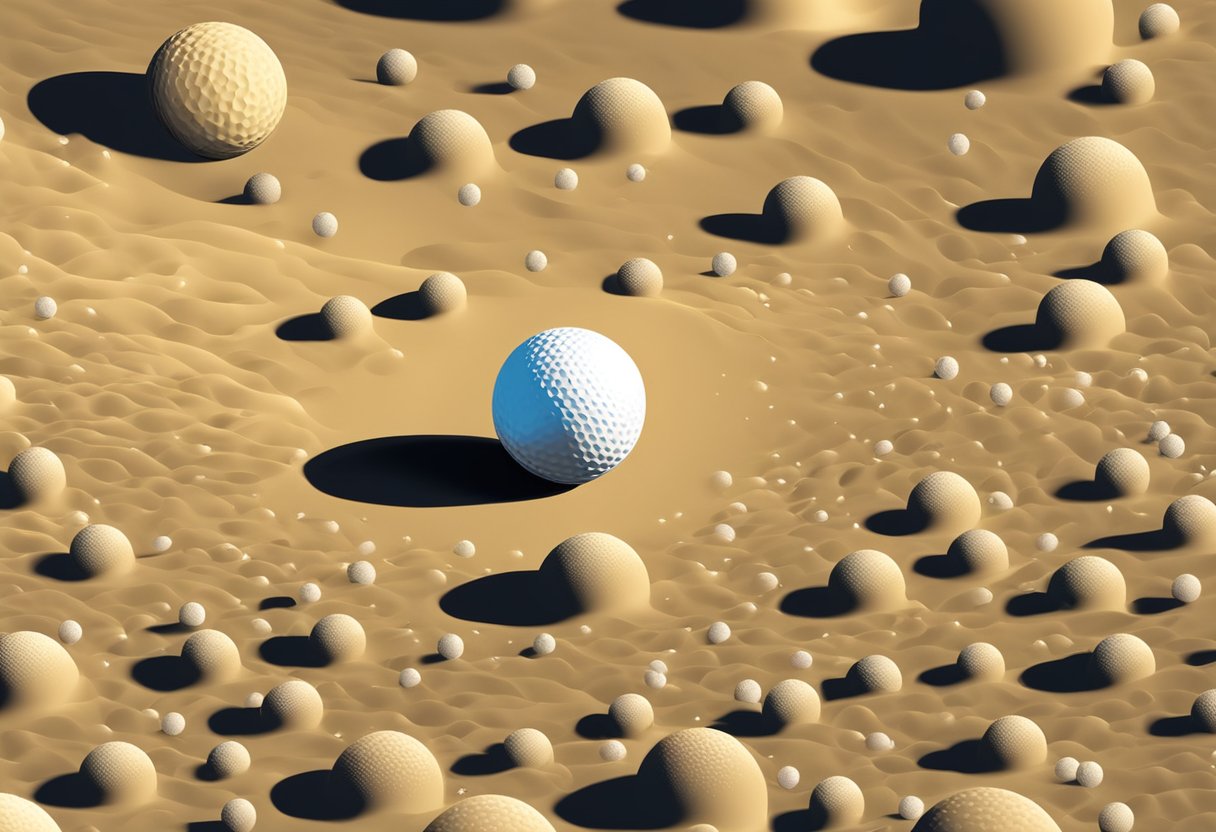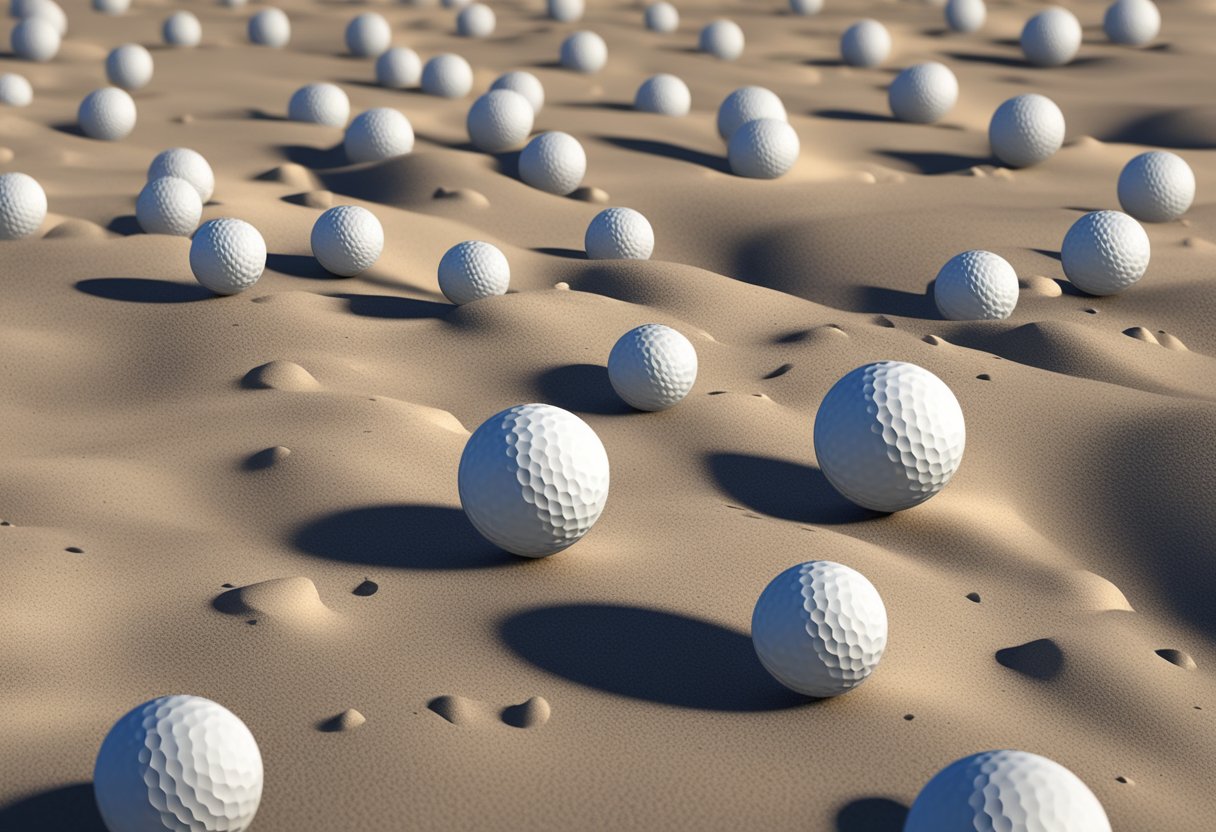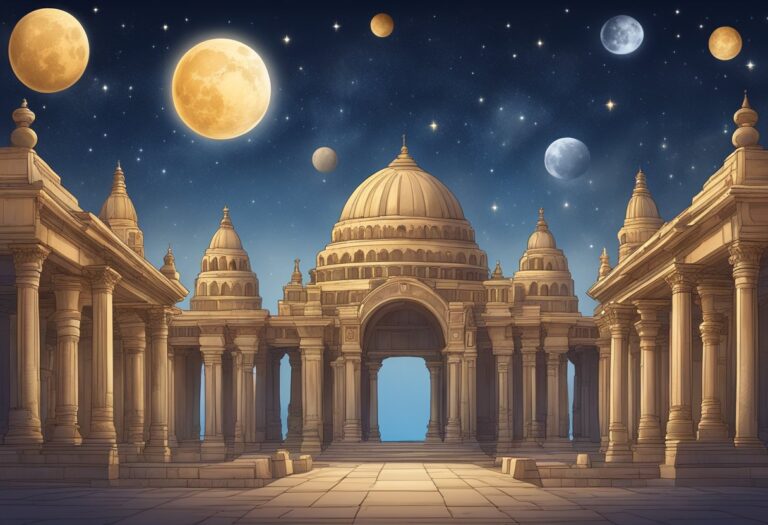While it might sound like a piece of science fiction or whimsical astronaut pastime, the moon does indeed host a few golf balls—thanks to human endeavors in space exploration.
When the Apollo missions were in full swing, golf wasn’t just a sport reserved for Earth. Astronaut Alan Shepard famously took a swing or two during the Apollo 14 mission, resulting in golf balls being left on the lunar surface. This event wasn’t just for show; it also provided insights into the physics of motion in a low-gravity environment.
These golf balls have not only become an anecdote in the history of space exploration but stand as symbols of human curiosity and the drive to mix the seriousness of scientific experimentation with the lightheartedness of sports.
Lunar golf balls have distinct characteristics, and their presence on the moon’s surface challenges our understanding of materials in space over long periods of time.
Yes, there are golf balls on the Moon, left by astronaut Alan Shepard during the Apollo 14 mission in 1971. He famously hit two golf balls, demonstrating physics in low-gravity conditions and symbolizing human leisure activities in space exploration.
Golf Balls on the Moon: The Apollo Missions
The storied history of lunar exploration includes a lighter footnote: golf on the moon. During the Apollo missions, an astronaut took a moment to perform a small, symbolic act that bridged human pastimes and celestial exploration.
Apollo 14 and Alan Shepard
On February 6, 1971, Apollo 14 astronaut Alan Shepard turned the moon into his personal golf course. With a makeshift six-iron, Shepard swung at two golf balls, sending them flying in the moon’s low gravity. These were not just any shots; they were the first and only golf swings in lunar history, leaving behind an unconventional artifact of human presence on the moon.
The Significance of Golf on the Moon
The act of hitting a golf ball on the moon was more than a quirky anecdote; it was a demonstration of the moon’s gravity and a moment of human levity amidst a monumental scientific endeavor. The simple swing symbolized the potential for recreational activities in space and showcased humans’ ability to adapt and enjoy leisure, even in the most alien of environments.
Characteristics of Lunar Golf Balls

When you think about golf balls on the Moon, consider how the lack of atmosphere and lower gravity field dramatically alter their characteristics compared to golf balls on Earth.
Exposure to the Lunar Environment
Golf balls on the Moon undergo intense conditions due to the lunar environment. Without an atmosphere, they are directly exposed to vacuum, extreme temperature fluctuations, and solar radiation. These factors can lead to material degradation over time, affecting the surface and internal structure of the golf balls. The dimples on a lunar golf ball do not serve their usual purpose of aerodynamic stabilization, as there is no air to interact with.
Trajectory and Distance on the Moon
Due to the Moon’s gravity being only 1/6th of Earth’s, a golf ball hit on the lunar surface would follow a different trajectory and could travel up to six times further. Assuming a powerful drive, you could witness a golf ball achieving significant distances before settling down. With no air resistance, the ball’s motion is influenced only by the Moon’s gravity and the initial force of the strike.
Scientific Experiments and Moon Golf
In 1971, Apollo 14 astronaut Alan Shepard famously hit two golf balls on the Moon, providing not just an iconic moment for both golf and space history, but also valuable data for scientific research.
Lunar Surface Study
By striking golf balls on the Moon’s surface, Shepard inadvertently contributed to our understanding of the lunar regolith—the Moon’s soil-like layer. The interaction of the golf balls with the regolith allowed scientists to observe material displacement and study the properties of the lunar surface. For additional context on this matter, you can find relevant discussions in Golf balls, boomerangs and asteroids: the impact of missiles on society.
Low-Gravity Physics
The flight of a golf ball on the Moon also offered insight into low-gravity physics. Observations were made regarding the ball’s trajectory, spin, and range in the Moon’s one-sixth gravity. These factors are key in developing a deeper understanding of motion and ballistics in reduced gravity environments. Publications such as Science and Golf II: Proceedings of the World Scientific Congress of Golf cover extensive research on the subject of golf and science, including the physics of golf in abnormal conditions such as the Moon’s environment.
Cultural Impact of Lunar Golf
When astronaut Alan Shepard hit two golf balls on the moon during the Apollo 14 mission, it created a unique cultural symbol connecting space exploration with a popular Earth sport.
Public Perception
Astronaut Alan Shepard’s golfing feat on the moon did more than just showcase human dexterity in space. It sparked your imagination about what life beyond Earth could include. Various articles and discussions over the years reflect on how this moment is viewed as blending the familiar with the extraordinary. The image of a golf ball flying through the moon’s weak gravity became a symbol of human playfulness and ingenuity in the stark lunar landscape.
Influence on Popular Culture
Shepard’s lunar golfing has been referenced in numerous forms of entertainment and media, leaving a lasting imprint on your cultural landscape. From being parodied in cartoons to being depicted in films and books, the scene represents humanity’s playful side amidst the seriousness of space exploration. Insights like those from Springer publications suggest that such an act of leisure—golfing on the moon—could serve as a stress relief and recreational activity for future lunar inhabitants.
Future of Golf and Lunar Exploration
Your curiosity about golf balls on the Moon might stem from the historic Apollo 14 mission, during which astronaut Alan Shepard famously hit a golf ball on the lunar surface. Indeed, there are golf balls on the Moon—Shepard left two of them there. But what does this mean for the future of golf and lunar exploration?
As interest in lunar exploration increases, you may wonder if golf could be more than just a symbolic activity on the Moon. The lighter gravity, for one, would allow golf balls to travel much further than on Earth. As part of future lunar habitats, golf on the Moon might be a recreational activity for astronauts, combining exercise with stress relief.
Your experience with golf could also benefit from lunar exploration through technology transfer. The advancements in materials and designs developed for space missions might trickle down to enhance sports equipment, including golf clubs and balls.
- Furthermore, you could engage with lunar exploration virtually through simulations created using actual lunar landscapes.
- New, space-themed courses could be designed to test your skills in a unique setting.
Lastly, the concept of space exploration and golf share common ground—the cutting-edge technology, the drive for discovery, and the commitment to pushing limits.
The crossover between golf and lunar exploration emphasizes the human penchant for taking Earthly pastimes to new frontiers. Whether your interest lies in the science or the novelty of extraterrestrial golf, the prospect of integrating golf into future lunar missions is compelling, symbolizing the blend of human leisure with the exploration of the cosmos.
Frequently Asked Questions
When you look up at the moon, one of the lesser-known facts is that it serves as a resting place for a few golf balls, a unique historical footnote from the Apollo missions.
Who was the first person to play golf on the Moon?
Alan Shepard was the first person to play golf on the Moon. He improvised a makeshift golf club during the Apollo 14 mission to take a few swings.
How many golf balls were left on the lunar surface by astronauts?
Two golf balls were left on the Moon, both hit by astronaut Alan Shepard during the Apollo 14 mission.
Which astronaut hit a golf ball on the Moon, and during which mission?
Astronaut Alan Shepard hit a golf ball on the Moon during the Apollo 14 mission in February 1971.
What is the estimated distance that the golf balls were driven on the Moon?
The golf balls hit on the Moon by Alan Shepard were estimated to travel much farther than they would on Earth due to the Moon’s lower gravity and lack of atmosphere, but specific distances were not accurately measured at the time.
What type of golf balls were used for the lunar golf shot?
The specific brand of the golf balls used on the Moon has not been documented, so the exact type remains unknown.
Are there photographs or videos of the golf activity on the Moon?
Yes, there are photographs and video footage showing Alan Shepard’s iconic golf shot on the Moon. These visuals provide a rare glimpse into this lighthearted moment of human activity beyond Earth.


![Best Smartphone Telescope Adapter: Top [year] Picks](https://observationhobbies.com/wp-content/uploads/2024/01/Best-Smartphone-Telescope-Adapter-768x525.png)

![Vaonis Vespera Observation Station Review [year]](https://observationhobbies.com/wp-content/uploads/2024/01/Vaonis-Vespera-Observation-Station-Review-768x525.png)
![Best Telescope for Deep Space Observation: Top [year] Picks](https://observationhobbies.com/wp-content/uploads/2024/01/Best-Telescope-for-Deep-Space-Observation-768x525.png)

![Hexeum Telescope Review in [year]](https://observationhobbies.com/wp-content/uploads/2024/01/Hexeum-Telescope-Review-768x525.png)